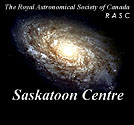 |

A RARE Jovian Event This Evening - DONE THAT & AWESOME!
From: Richard Huziak <huziak@SEDSYSTEMS.CA>
Posted on the RASClist, Fri, 11 Apr 2003 09:42
Well Bruce [McCurdy], I hope you saw it! It was very cool! I had noticed this event a few weeks ago while cruising through the Guide 7 simulations. I picked up Jupiter just after 3:00UT (9 pm CST) and immediately saw Callisto (IV) already past the meridian. It was very easy to see, and at first I thought it was the shadow of Io (I), but it was in the 'wrong' place for that. Callisto appeared to be a medium grey colour, and so easily visible against the whiter clouds of the equatorial band. Io's shadow was just past Jupiter's '1% dark crescent (terminator)' on the leading edge, and so still in the morning 'dusk'. Once I realized this, it was easy to see, and very black. The sky was not too good - thick haze - but I managed to pick out Io, almost on the meridian. Io appeared to be a pale salmon colour against the clouds, so has far less contrast than Callisto. At 360x, I could see that Io was only about 2/3 the size of Callisto. Io's shadow (with penumbra) and Callisto were about the same size. I watched over the next half-hour as the moon pair merged - Io travelling to Callisto, with Callisto barely moving, and several minutes before 9:30, the two were indistinguishable. (Callisto ~1/2 occulted Io, but I could not distinguish the pair due to the poorer sky). By now, the pair was entering the dusky area on the leading edge of Jupiter, and once Io left Callisto, I could not see it at all until it reached the very edge of the planet, and appeared as a gleaming disk before it actually budded off to black sky. Callisto is so slow moving that I almost fell asleep watching it bud from the edge maybe a half-hour later, though that was cool, too. As it left, it's greyness kept the moon 'dull' for a while until it cleared the glare of Jupiter. I found the moons loose most of their colour once they hit dark sky again, likely due to the increased contrast - the subtle colours are easily visible against the cloud decks.
To make the event more exciting, just about the time the moons merged, the newer feature on the North Equatorial Band (NEB), which I fall the Little Red Spot, appeared, and following that was the greatly disturbed NEB waving in the wind. This was fun to watch until Callisto's events were done.
I think you missed an event in your list, though. Just past midnight, I believe that the occultations continued, with Io occulting Europa about 1 diameter off the leading edge of Jupiter. My sky had died by that time, and I couldn't watch. :-(
Gord Sarty has kindly posted my sketches of yesterday's Jupiter mutual events at:
http://duke.usask.ca/~rasc/pdfs/RH_p6503-4.pdf
Note: Geoff Gaherty responded: "What a great record of a beautiful set of events. I'll call us even in the
Variable Star Challenge on the basis of that set of drawings!"
Thanks, Geoff!